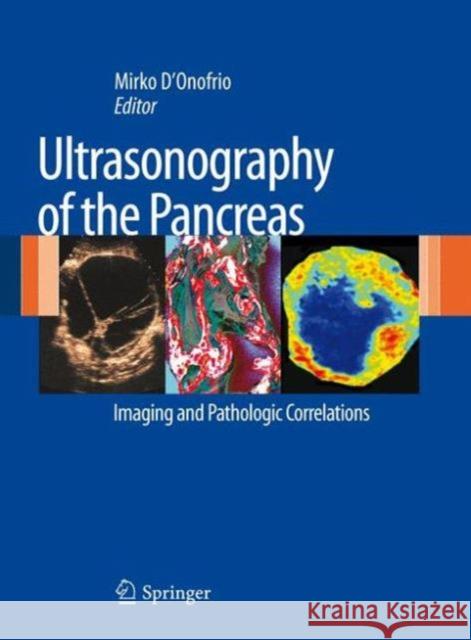Ultrasonography of the Pancreas: Imaging and Pathologic Correlations » książka
Ultrasonography of the Pancreas: Imaging and Pathologic Correlations
ISBN-13: 9788847023789 / Angielski / Twarda / 2011 / 202 str.
Ultrasonography of the Pancreas: Imaging and Pathologic Correlations
ISBN-13: 9788847023789 / Angielski / Twarda / 2011 / 202 str.
(netto: 384,26 VAT: 5%)
Najniższa cena z 30 dni: 385,52
ok. 22 dni roboczych
Bez gwarancji dostawy przed świętami
Darmowa dostawa!
Ultrasonography (US) has long been considered an important diagnostic imaging modality for investigation of the pancreas despite certain significant and well-known limitations. Indeed, in many countries US represents the first step in the diagnostic algorithm for pancreatic pathologies. Recent years have witnessed major advances in conventional, harmonic, and Doppler imaging.New technologies, softwares, and techniques, such as volumetric imaging, enhancement quantification, and fusion imaging, are increasing the diagnostic capabilities of US. The injection of microbubble contrast agents allows better tissue characterization with definitive differentiation between solid and cystic lesions. Contrast-enhanced US improves the characterization of pancreatic tumors, assists in local and liver staging, and can offer savings in both time and money. Acoustic radiation force impulse (ARFI) imaging is a promising new US method to test, without manual compression, the mechanical strain properties of deep tissues. Furthermore, the applications and indications for interventional, endoscopic, and intraoperative US have undergone significant improvement and refinement.This book provides a complete overview of all these technological developments and their impact on the assessment of pancreatic pathologies. Percutaneous, endoscopic, and intraoperative US of the pancreas are discussed in detail, with precise description of findings and with informative imaging (CT and MRI) and pathologic correlations.
For many years, ultrasonography (US) of the pancreas has been considered an important diagnostic imaging modality, although with significant well-known limitations. Major advances have occurred in conventional, harmonic, and Doppler imaging. Currently, US, together with tissue harmonic imaging (THI) and Doppler study, usually represents the first step in the diagnostic algorithm of pancreatic pathologies. In the pancreas, the contribution of contrast media to the detection and characterization of both solid and cystic exocrine and endocrine pancreatic neoplasms is increasing. The introduction of microbubble contrast agents allows a definitive differentiation between solid and cystic lesions, and contrast-enhanced ultrasonography (CEUS) has improved the characterization of pancreatic tumors together with their local and liver staging.To overcome subjectivity, the use of quantification software has been suggested for the characterization of pancreatic lesions during CEUS study, as recently reported in literature.§Furthermore, the applications and indications for interventional, endoscopic, and intraoperative US have significantly improved in the last year, as a result of technological advances. There has been increasing interest in the study of the visco-elastic properties of tissues over the last few decades. The earliest imaging techniques, such as elastography and sonoelasticity, only allowed evaluation of superficial tissues, and required external compression. Acoustic radiation force impulse (ARFI) imaging is a promising new ultrasound method to test the mechanical strain properties of deep tissues, with no requirement for external compression. This new technique seems to be potentially able to allow tissue characterization, and to represent a feasible alternative to invasive needle biopsy.§All these technological developments in the field of ultrasound justify a complete overview and precise description, as is given in this book.











